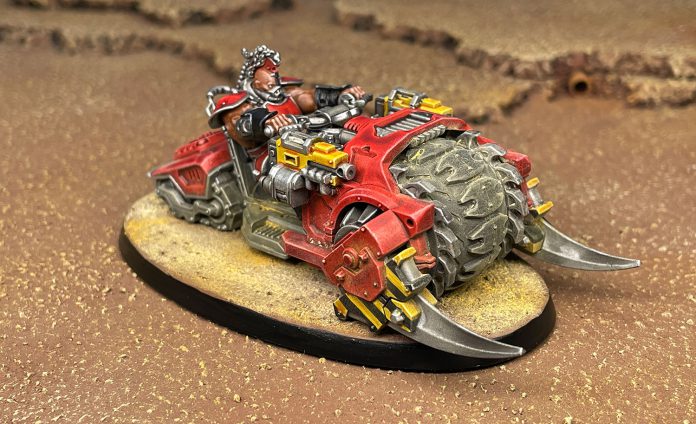Howdy scummers! Necromunday is a bit early to coincide with the release of Book of the Outlands! Many thanks to Games Workshop for providing us with a review copy.
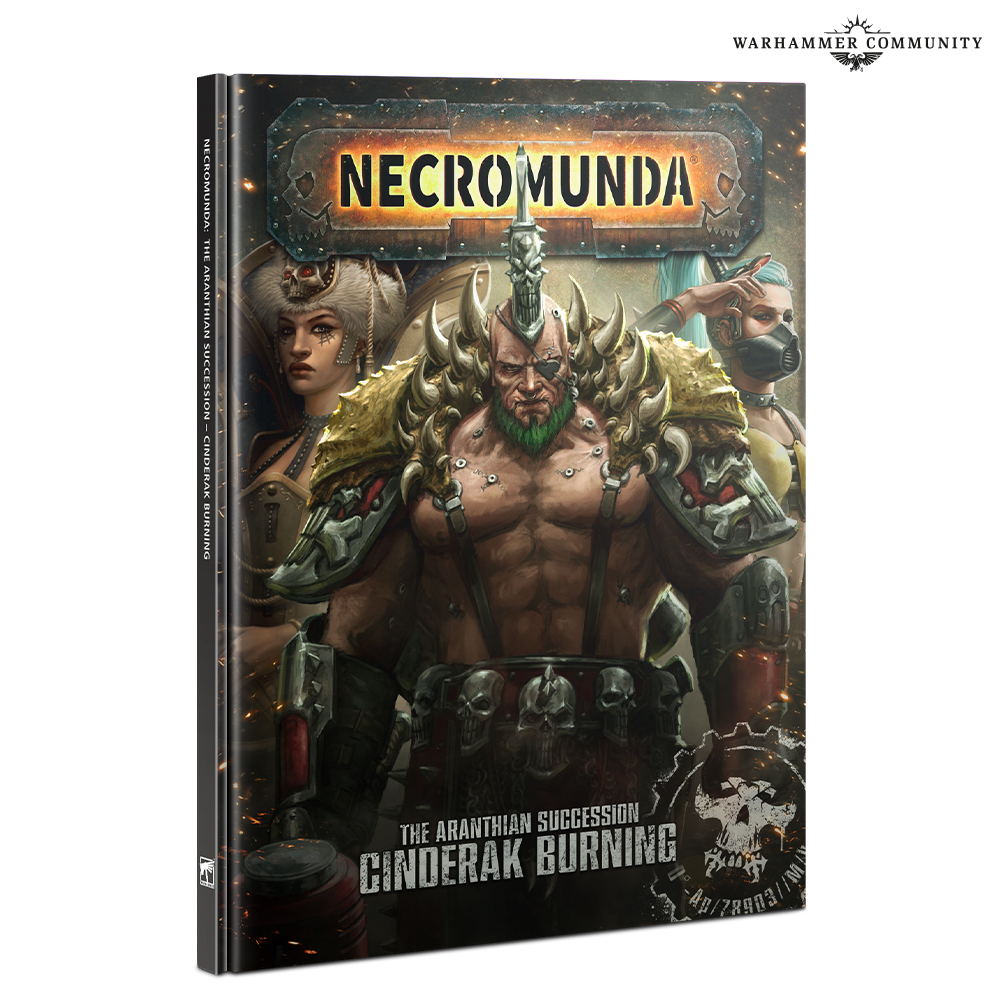
Necromunda: Aranthian Succession – Cinderak Burning has:
- A background section covering the events that occur on Necromunda during the Great Darkness, after the Great Rift has torn the Imperium in half.
- A brand new Succession Campaign, which is the beginning of a series of linked campaigns to be continued in further books.
- 12 narrative scenarios to work with the campaign.
- New vehicle rules for Escher and Goliath house gangs.
- Four new Dramatis Personae representing major players in the background.
Background
The opening of the Great Rift descended upon Necromunda in the form of a planet-wide blackout. Machines that had functioned for millenia ground to a halt while the billions of souls that lived deep inside the metal mountains were plunged into clinical darkness. The underhives became war zones as cultists and mutated horrors rose up from the sump. Those unfortunate enough to be outside the hives found themselves in a world-spanning storm as the climate was abruptly shifted by the suddenly cooling hive cities. These days are known as the Great Darkness, and during this calamity Lord Helmawr himself suffers an assassination attempt that requires him to be kept in stasis to live. The aftermath of the Great Darkness has been one of crisis. Helmawr did not leave a succession plan, and in his wake the House of Helmawr finds themselves at odds with the other Noble Houses for control of Necromunda. The leading factions are the Imperial House or a Rebellion brought about by Lady Credo, who battles under the sigil of a seven-pointed star. This is the setting that players find themselves in Part 1 of the Succession Campaign provided in the book.
The Succession Campaign: Part 1
The Succession Campaign is a narrative event that allows the players to play a part in the succession of Necromunda. The campaign uses the Necromunda and Ash Wastes campaign rules and is divided into two phases. The first phase, called the Great Darkness, has the players fighting to consolidate whatever power they can find as the world shuts down around them. In the Spark of Rebellion phase gangs declare allegiances in the upcoming civil war and claim influence for their side through the control of Sympathisers. The book references gameplay from the Ash Wastes rulebook, which is unfortunate because that book is still only available with the $300 boxed set. You will also need a book which includes the basic rules for Bounty Hunters and Hive Scum, which is nearly every one of them.
Gang composition for a Succession Campaign is notably different from other campaigns as it has gangs start with 2,000 credits instead of the usual 1,000. As with a traditional Ash Wastes campaign gangs also get an additional 400 credits which can only be spent on crew, vehicles, fighters that come with Wargear that grant the Mounted condition, or Wargear that grants the mounted condition itself such as bikes. You must spend the 400 credits as specified or you lose the money, but you can spend more than 400 credits on vehicles and related items if you want.
The campaign is divided into the traditional six cycles with a seventh cycle of Downtime in the middle. The “territory” equivalent for a Succession Campaign are called Sympathisers, and the campaign starts by generating three Sympathisers for every player. Sympathisers represent various factions within the Necromunda universe, such as Venators, Cold Traders, the Guild of Coin, or even Hereteks. Control of Sympathisers is established through challenges, with each player issuing one challenge to another gang per cycle. Every gang starts with two Sympathizers; a Gang Sympathizer (which is the equivalent of a home territory and cannot be lost) and a randomly determined one taken from the pool of generated Sympathizers.
Each Sympathiser provides two boons; one that’s always active and another that’s active during the Spark of Rebellion phase. For example, the core boon for Gang Sympathisers is that they allow the Pitch Black rules to be ignored for one round once per battle, and during the Spark of Rebellion phase the gang gets an extra Ganger on 2D6 roll of 10 or better (16.6%, meaning this could have been a 6 on 1D6). Other Sympathisers can provide credits, a free Seek Illegal Equipment Trade action, free hanger-ons, or boost weapons with illegal techno-heresy.
We predict it will take roughly ten seconds before everyone just calls them “simps” for the sake of brevity.
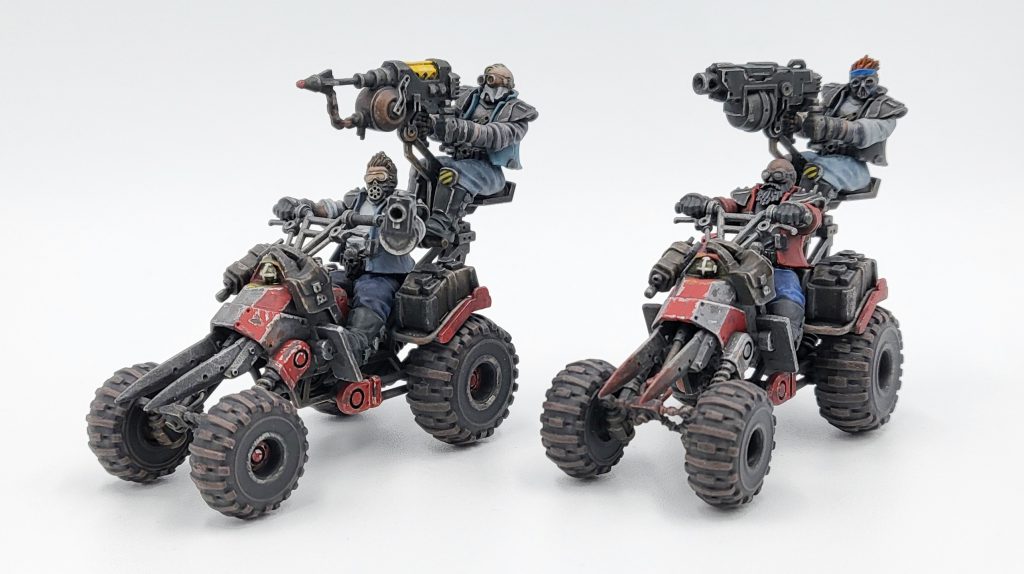
In the Great Darkness Phase the gangs are left on their own. They cannot re-equip from their House Equipment Lists, nor can they recruit new fighters, crew, or Hangers-on. The Rarity of all items in the Trading Post and Black Market is increased by 4, and all Sector Mechanicus and Zone Mortalis battles use the Pitch Black rules. Battles fought outside in the Ash Wastes use the Changing Season to represent the chaotic weather. During this time only unclaimed Sympathisers can be claimed as rewards for gang battles, unless everyone has been taken.
The middle of the campaign is defined by a single cycle Downtime phase where fighters recover and can be promoted, 250 credits worth of fresh recruits and equipment are purchased from the Gang Equipment List, and players decide their allegiance. Gangs can swear for Lady Credo’s Rebellion, the Imperial House, or attempt to stay unaligned. This is a civil war so there are no restrictions on which side a gang can take. Allegiance allows players to freely recruit particular Dramatis Personae for a single battle on a 4+ as well as a second benefit.
Imperial House allies can recruit either Chymist Mother Cyniss or Lady Heara, 13th Daughter of Lord Helmwar and also gain an additional D6x10 credits when generating income from Sympathisers. Allies of Lady Credo’s Rebellion can recruit either Athera and Stix or the Rebel Lord Lady Credo as well as gain 1 extra Reputation every time they win a battle. Unaligned gangs can recruit Gorshiv Hammerfist, Djangar ‘Gunfists’, Drysea Roadboss Margo Merdena, or Vespa ‘Minx’ Merdana and get extra experience when a model takes an opposing gang’s Leader Out of Action. Unaligned gangs also have the opportunity to take a side during any post-battle sequence.
The final three cycles of the campaign are the Spark of Rebellion phase. The limitations of the Great Darkness phase are completely removed, while Ash Wastes battles take place during the Season of Ash. During the Spark of Rebellion phase only controlled Sympathisers may be claimed as rewards. The campaign ends with a series of Triumphs awarded to gangs which have achieved certain accomplishments, such as winning the most battles for a particular side or controlling the most Sympathisers.
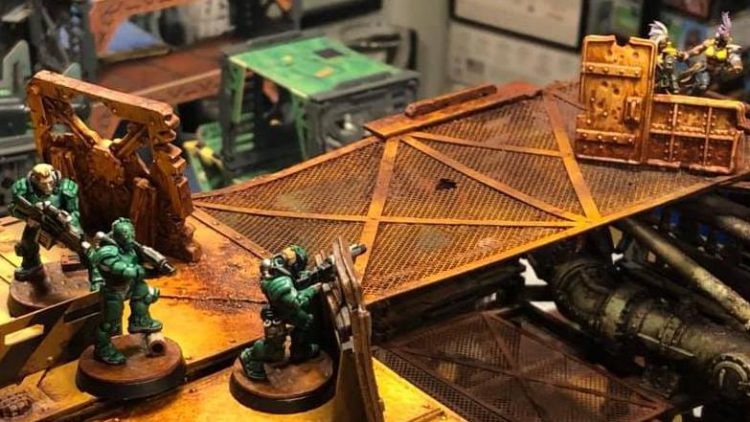
Narrative Scenarios
Cinderak Burning includes a dozen brand new scenarios, and they are wonderful. They’re clearly designed to work best within the confines of the Succession campaign, with smaller crew sizes topping out at seven at most for all but one scenario. Vehicles and battles in the wastes are represented, but not exclusively – half of the scenarios in the campaign take place in the confines of the Underhive.
There’s also been a deliberate tuning of rewards here – victory grants the winners 6dx10 to 3d6x10 credits depending on the scenario, but each mission also doles out anywhere from 1d3x5 to 1d6x10 credits to the loser. Still a fine spread, but not enough to allow a single player to snowball into an economic upset based solely on a single scenario’s windfall! (We’re looking at you, Caravan Heist.)
These scenarios are pretty fantastic as a whole. If we’re going to highlight a few as a taste, we have to start with Battle of The Riftways, which begins as a rolling roads scenario where the attackers careen wildly down the battlefield as defenders constantly deploy and redeploy barricades and reinforcing fighters to slow them down. Then, on the fourth round, the road stops moving and a large barrier is placed on the far end of the board for the defenders to move into. The scenario is now an Ash Wastes fight for the attackers to breach the gate while the defenders and their sentry guns blast away.
Once you’ve made it back into the Underhive, try Assassin in the Spire, a Sneak Attack scenario but actually fun. You’re Agent 47, you’re the Predator, you’re Freikstorn Strix: you’re a souped-up lone assassin in tight corridors tasked with killing a VIP who doesn’t know you’re coming for them. It’s just you against a whole bunch of guards, but you’re not worried. The Assassin can’t be killed until they’re stripped of all their toughness through Flesh Wounds, they’re immune to being Pinned, and they have as many activations during a round as the enemy has remaining defenders.
This isn’t the first time that Necromunda has offered a Splinter Cell-esque scenario, as several of these mechanics were explored back in House of Blades’ Back From the Dead. It is, however, a far more refined and entertaining take on the concept. We’re looking forward to this scenario popping up in our campaigns for a pleasant change of pace from traditional gang on gang violence.
Taking gameplay mechanics from older (and occasionally janky) scenarios and spinning them into something fresh and clean is a running theme for several scenarios in Cinderak Burning. If you’ve played enough Sabotage out of the hardcover rulebook you’ll immediately recognize several elements in Gunk War, where an attacking gang attempts to destroy a central objective.
What’s the difference this time? The central gunk tank is on fire, and the halo of flames gouting forth obscure all of the defenders behind it from any shots from ranged weapons. Crossing the flames can set fighters ablaze, and they’ll have to do it. The tank can only be destroyed in close combat, and explodes when destroyed!
All in all, as both a mission pack for a campaign and as options for a skirmish match, the Cinderak Burning’s selections are the tightest dozen scenarios you could possibly ask for in a single Necromunda book. They successfully thread the needle between being straight-forward enough to be run multiple times in a campaign without being too complicated, while inviting interesting narrative hooks through unique gameplay mechanics that’ll make them a hit for a one-off monthly skirmish as well.
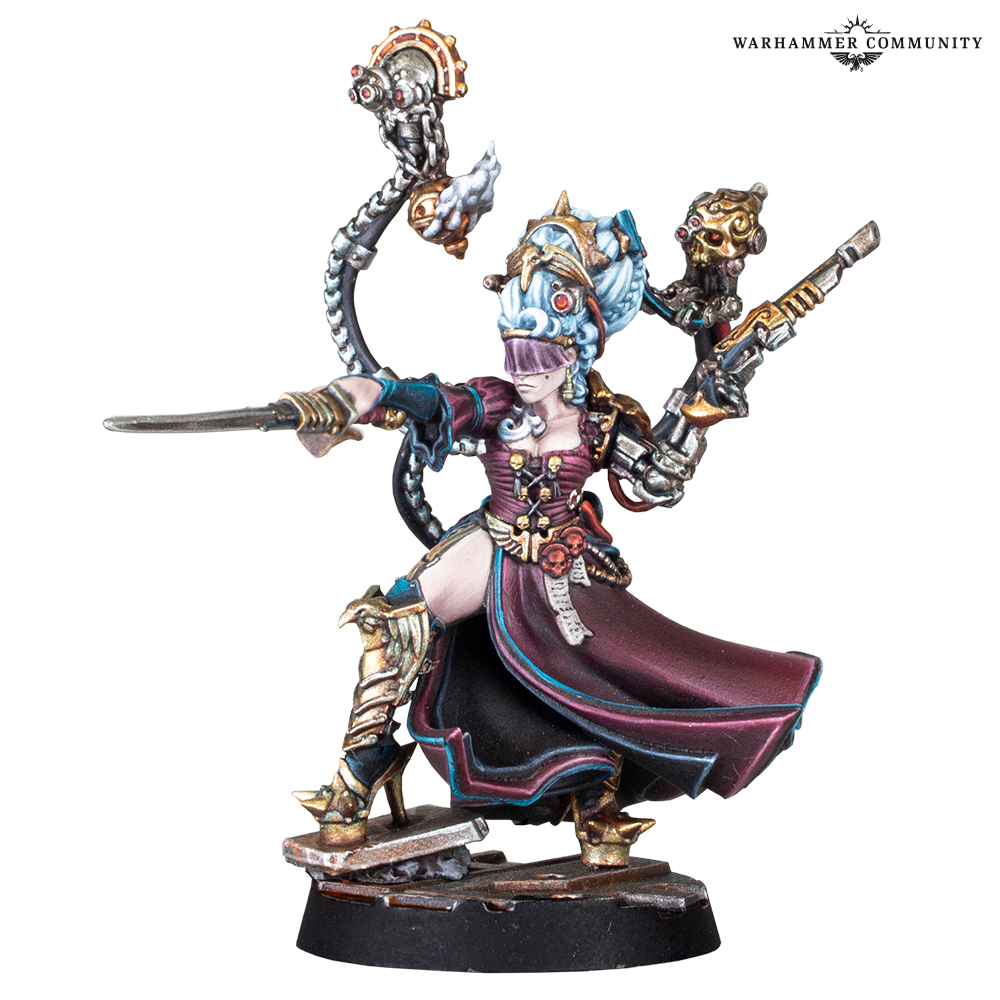
Dramatis Personae
The book includes rules for four Dramatis Personae. First up there’s Lady Haera, Imperial House Agent and unrepentant sociopath. When not torturing puppies she is running around with a phase sword and power spear which will teleport back into her hand when thrown rather than falling to be the ground to be picked up like a commoner. The Goliaths get Gorshiv Hammerfist, the first Stimmer created and an absolute monstrosity in combat. Armed with pair power hammers, he cannot be pinned, he cannot be moved, and he can literally Walk It Off by healing if he makes two Move (Simple) actions and passes a Toughness check. Next there is Athera and her Caryatid Stix, who fight for Lady Credo’s Rebellion as an Agent of House Escher. Armed with a master-crafted chainaxe and plasma pistol she is a nasty melee combatant who is very hard to kill courtesy of Stix’s precognitive abilities. Finally there’s Vespa “Minx” Merdena, a Bounty Hunter who can only be taken by House Orlock and the first vehicle-based Dramatis Personae available. Her quad wheeler isn’t very tough, but she is armed with a Rapid Fire (1) missile launcher which takes full advantage of a BS 3+ profile.
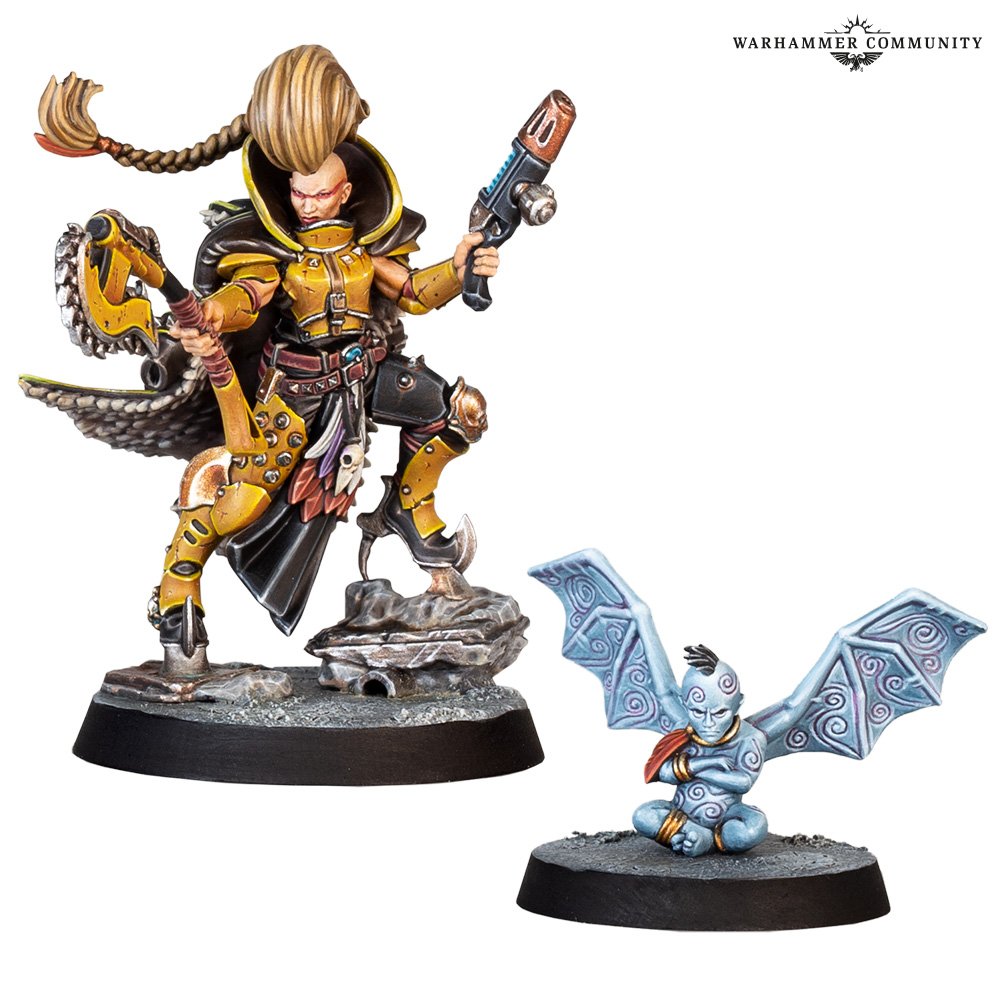
Players will need several books in order to get access to all of the Dramatis Personae available in the campaign. Cyniss is located on page 72 of House of Blades. Lady Credo is found on page 107 of Book of the Outcast. Djangar ‘Gunfists’ is on page 130 of House of Chains. Finally Margo Merdena is located on page 73 of House of Iron. Note that while several House Agents have rules about who can hire them, those rules are explicitly ignored for the purpose of recruiting Dramatis Personae as a benefit of taking a side.
Fighters, Vehicles, and Additional Rules

The book is surprisingly light on gang rules. Escher and Goliath each get a vehicle and their unique crew with the Gang Fighter (X) rule (presumably this means every House gang will get one). There’s also a selection of vehicle tactics for each gang and then a reference for all of the weapons, upgrades, and equipment listed in the book (and nothing more). This follows the same process that GW has used for all of their other books.
Escher Helions are the House crew and get the Gang Fighter (Crew) rule the same way that Orlock and Squat crew do. They have a 4+ BS and all of their other characteristics are 7+ at a cost of 30 credits. In terms of equipment their list is identical to the list available to crews in Book of the Outlands with the exception of also getting a bio-booster. There is no reason a crew (which never receive Injury rolls) would need a bio-booster (which once per game reduces the number of dice used in an Injury roll by one). Their primary skills are Savant and Driving, and curiously they also get access to Leadership skills as a secondary.
The Escher Cutter is a jetbike Wargear that costs 85 credits plus a mandatory weapon option (75 credits for a twin-linked grenade launcher with frag and krak, 110 credits for a twin-linked plasma gun, or 200 credits for twin-linked heavy stubbers). A 10 credit premium to be able to re-roll the Ammo dice on an overcharging plasma gun is a huge advantage. These weapons do not take up a weapon slot and are considered to have suspensors. Equipping an Escher Cutter also changes a model’s Movement characteristic to 9” and allows them to move freely between levels along with other options. Fighters riding a Cutter also get access to the Deploy Gas Trap (Double) action, which allows the fighter to place a gas trap within 1” of their base and then move up to their Movement characteristic.
The Goliath House crew are Road Thugs. At 25 credits they have a 4+ BS, 8+ Leadership and Intelligence, 9+ Willpower, but a 5+ Cool. Their primary skills are Shooting (the majority of which do not apply to Unwieldy weapons) and Driving. In the same way that the only way you can field a Ridgehauler is with a Guild of Coin hauler, Goliath Road Thugs are the only crew that can drive the Goliath Mauler. Sadly Goliaths do not get access to bio-boosters, meaning only Escher crews can spend 35 credits on a piece of Wargear that will do nothing for them.
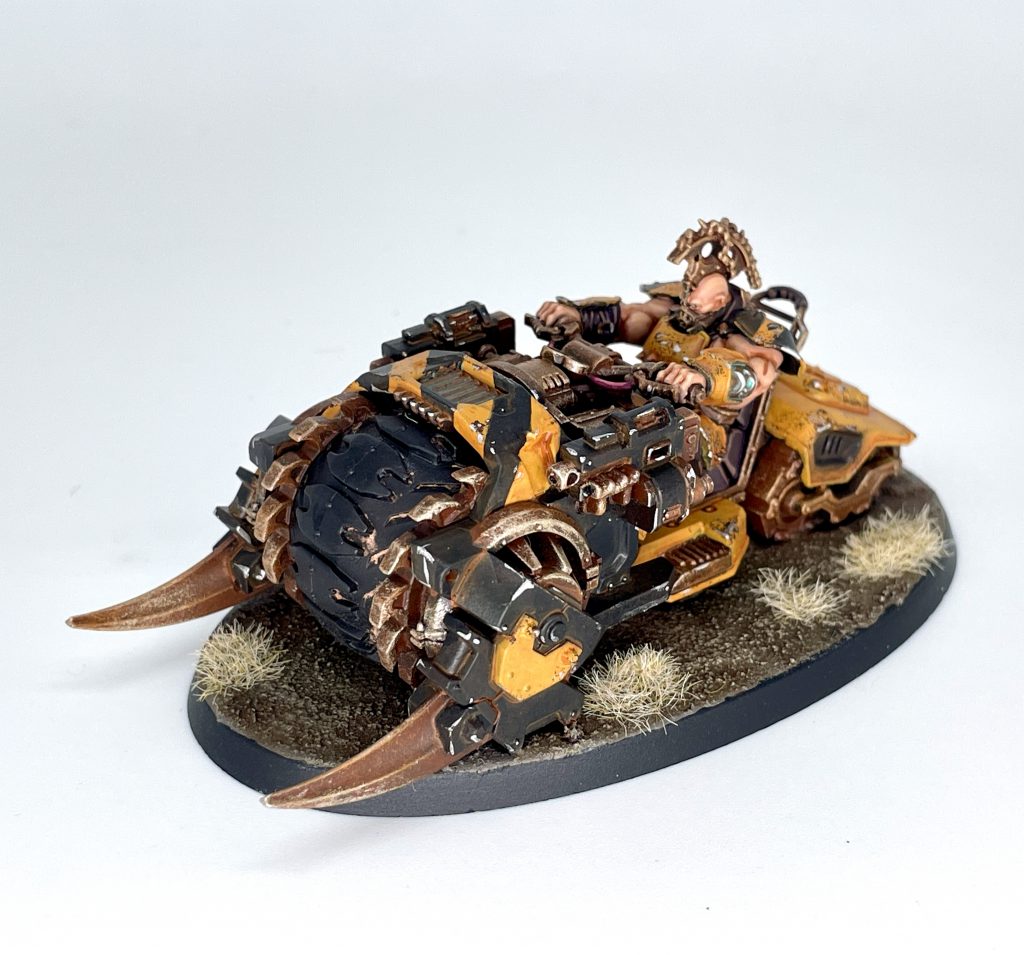
The Goliath Mauler (check out our model review) is a 100 credit light vehicle which could easily have been a bike. Featuring a 7” movement and T5/4 profile with 3 HP, a 5+ Handling, a 5+ Save, and a single Crew Operated forward-firing weapon point, it has two special rules. The first is Power Ram, which adds 2 to the Strength, AP, and Damage of a vehicle impact involving the Front arc of the Mauler. With a 7” Movement characteristic this translates to a S7, AP -3, D3 hit. Second it has a Hybrid drive which allows it to be counted as both a wheeled and tracked vehicle. It can start with twin-linked bolters for 65 credits, or a twin-linked grenade launcher with frag and krak grenades for 75 credits. Upgrade wise it has room for 2 body, 1 drive, and 1 engine upgrade.
There are a lot of tactics and we’ll go over them in a future article. For Escher some fun ones include Chem Exhausts, where fighters within 1” of the vehicle while it moves are hit with a weapon with the Toxin and Gas traits. Chemical Fuel Wizardry lets you pickle a vehicle and give it an extra 2” movement at the expense of losing 1 hull point on a D6 roll of 1 in the End phase. Goliath get access to effects like T-bone which increases the Strength of a collision by 2 and Drive It Off which allows the vehicle to ignore a Tough by making a Toughness check. Players should be particularly scared of Bowlin’ Action which changes the Ram (Double) action to a Simple action for a single vehicle activation.
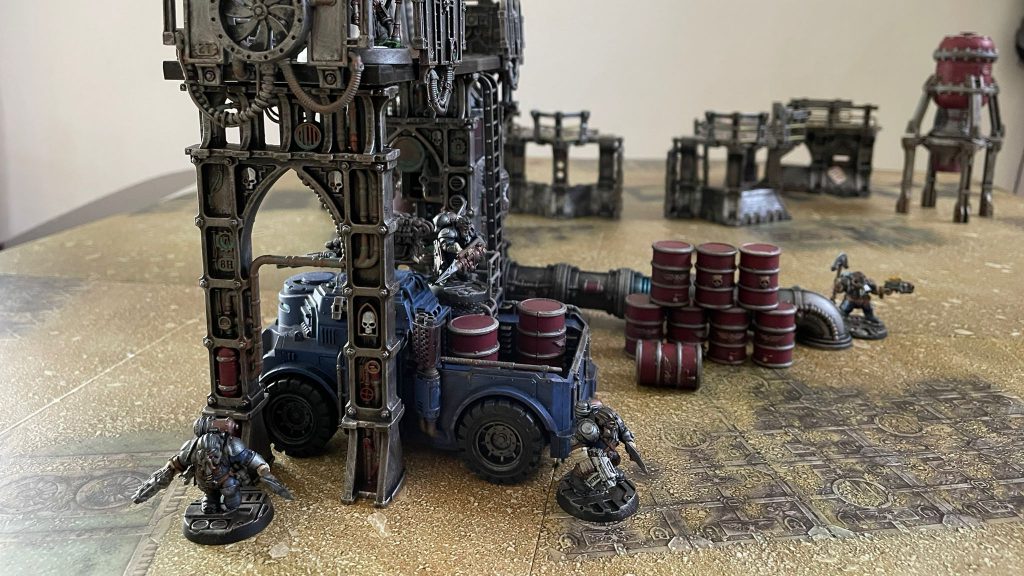
Weapon Effects on Vehicles
The book also expands some of the weapon effects that can affect vehicles. The rules for Blaze are reprinted and look the same as before. Gas weapons now make a D6 test against the Rear Toughness of the target; if the result is higher than the Rear Toughness or a natural six then the target suffers a Crew Wounded result on the Crew Damage table. Phase weapons now explicitly prevent vehicles from making a save roll. Finally, Unstable weapons now cause a Catastrophic Hit to the body and render the weapon unusable should it overheat.
Final Thoughts
The general consensus is that we LOVE this book. We love the campaign, we love the new rules, we love the new fluff. We’ll do a roundtable on Monday to cover our individual thoughts, but we’re excited for this and to see what’s next.
As always, if you have any questions or suggestions drop us a line at Contact@Goonhammer.com.
